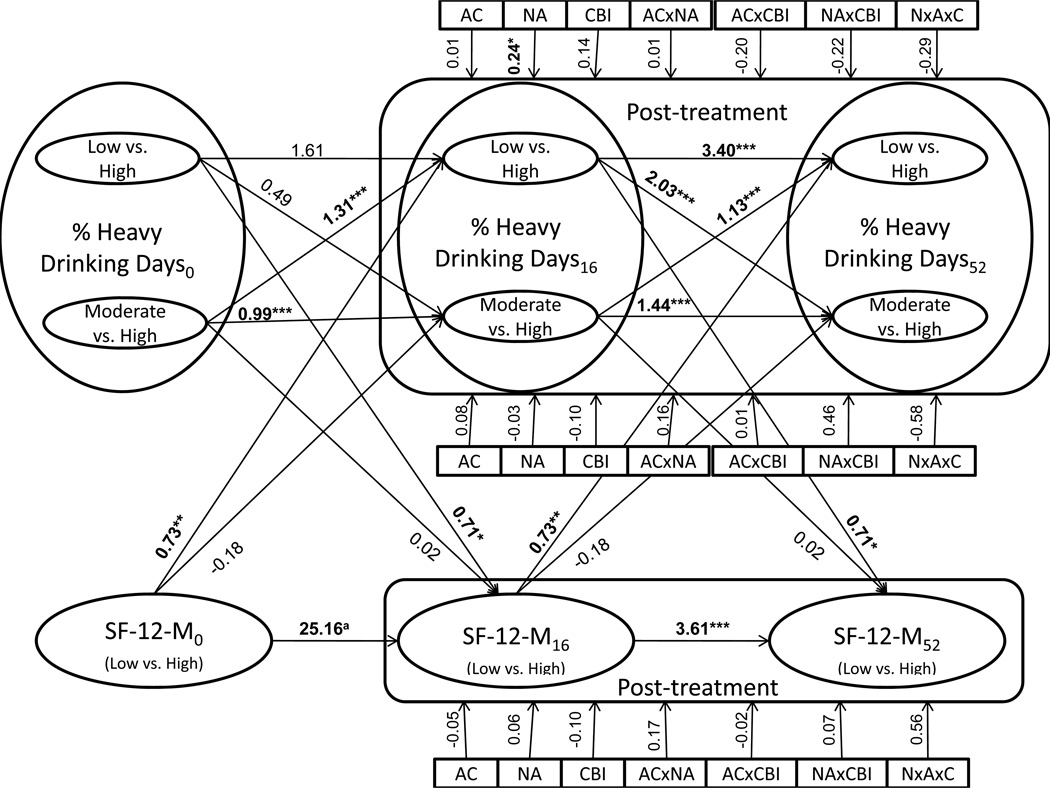Figure 2.
Results from the coupled hidden Markov model involving % heavy drinking days (PHDD) and SF-12 mental health. Because PHDD was represented by 3 latent states, multinomial logistic regression (low vs. high, moderate vs. high) was used to estimate relationships between PHDD and other variables. Horizontal paths represent autoregressive parameters, diagonal paths represent cross-lagged coefficients, and vertical lines represent the impact of treatment coefficients on post-treatment outcomes. One coefficient is provided for each treatment covariate predicting each outcome because these associations were constrained to be equal across assessment occasions (Table 2). Significant coefficients are in bold.
aThis path was automatically constrained by Mplus because of empty cells in the joint distribution of the categorical latent variables reflecting a near-perfect stability of SF-12 mental health between baseline and week 16.
* p < 0.05, ** p < 0.01, *** p < 0.001

